In a recent post by Dai Shihan Mark Roemke, he told the story of going to the island of St. Croix for five days of testing survival skills. He ended that post with this nugget of wisdom...
"It’s good to sometimes be uncomfortable in situations that you might not think you could ever endure."
This statement made me think of the local twenty-six acre pond in my neighborhood.
 But before I proceed further, first...The Dunker’s Disclaimer
But before I proceed further, first...The Dunker’s Disclaimer
Most written material you encounter about swimming in cold water comes with big disclaimers, in big red bold font, advising of the hazards if you are not careful. I have been teaching wild edible plant classes for years. Likewise, most edible plant books come with similar disclaimers saying to read the material, but don’t go out there and eat wild plants willy nilly. These cautions considered, there is something worth claiming in these experiences. Within the content is an invitation for a life-enhancing experience, but only if you proceed safely, do your research diligently, share your experience with a buddy, and possibly with consultation of a physician. My friend Duncan in the story below happens to work in the healthcare profession, so I had a slight advantage. I consider myself a strong swimmer, so add one more advantage.
So, enjoy the story for what it is, a story and not a how-to guide. But if you want a swim buddy...I’m easy to find.
*********
Since I was five years old, I've been a creature of the water. Competitive swimming was my life from this young age through college. After college, I "retired" to surfing when I moved to Hawaii and then California. I have stayed wet whenever possible over much of my life. I’m lucky to have lived in South Kona, Hawaii where I could snorkel daily with green sea turtles and swim at night with manta rays and bioluminescence. I've swum through rapids of the Grand Canyon and dunked at the base of pure spring desert waterfalls where you could drink the water while submerged. In Alaska I swam in cold rivers sourced from glacial melt (I didn't last long in those cold waters).
None of these experiences however, could compare to the connection I've had with our local pond over the past twelve months. The onset of Covid over a year ago resulted in the local indoor swimming pool shutting down. Little did I realize that this would change my life and more specifically my relation to water.
 70's Fahrenheit— In early June last year, my friend Duncan called me on the phone. "Ken, I'd like to work on my crawl stroke. Since you used to coach swimming, could you give me some pointers?" Duncan showed up the next morning, and we started swimming across the pond. I gave him some pointers. The water was a comfortable temperature, in the mid-seventies. We started swimming three times a week at 7 am. Dawn patrol fishermen dotted the shore, and occasional morning swimmers roamed the periphery. After two and a half years living by the pond, I hadn't "trained" by doing long distance swimming in these waters. I usually ventured down daily to romp in the pond with family and friends. For some reason I had been in a rut. I believed the indoor pool was for "training" and outdoors was for fun and play. That was about to change.
70's Fahrenheit— In early June last year, my friend Duncan called me on the phone. "Ken, I'd like to work on my crawl stroke. Since you used to coach swimming, could you give me some pointers?" Duncan showed up the next morning, and we started swimming across the pond. I gave him some pointers. The water was a comfortable temperature, in the mid-seventies. We started swimming three times a week at 7 am. Dawn patrol fishermen dotted the shore, and occasional morning swimmers roamed the periphery. After two and a half years living by the pond, I hadn't "trained" by doing long distance swimming in these waters. I usually ventured down daily to romp in the pond with family and friends. For some reason I had been in a rut. I believed the indoor pool was for "training" and outdoors was for fun and play. That was about to change.
The water was relatively clear and warm. Being a faster swimmer, I swam ahead of Duncan and then floated on my back to watch ospreys, hawks, kingfishers or eagles while he caught up. I was starting to like this routine.
80's— As late summer approached, the water warmed. Occasionally you could see a thin film along the surface. Pollen or algae? Hard to tell. The temperature was warm enough to heat my core and face to an almost uncomfortable level during peak exertion. Duncan was getting faster. He had outfitted himself with fins, and we now kept a similar pace. He started arriving with printed Google maps showing the distance we had covered previously, and a route we could take from beach to beach to fence and back that equaled a mile. The sunfish roamed the shore’s edge and would nibble our toes if we lingered near too long in the calf-deep water of the pond’s edge. My favorite mornings were swimming through a low layer of warm mist in the rain.
70's— As summer drew to a close, the swimming crowds thinned in the morning as virtual or hybrid schooling kicked in due to the pandemic. Duncan continued to arrive at my house on his bike by 7 am three times a week. It was nice feeling the shift back to a more comfortable water temperature. We could swim a little harder without overheating. The die hard morning swimmers still arrived, and you could see their brightly colored floats trailing behind them as they traversed the pond. The early fall bird migrations were beginning. When I did backstroke, I watched geese fly over in "V" formation, while I oriented myself to the cardinal directions. "Let's see, which way is north?" I would think. Some flocks were already beginning their southward journeys.
 60's— I remember thinking at the pond one morning..."Where did all the swimmers go?" Getting in the water in the morning was starting to feel a bit jolting to my body. When I surfed in California, the ocean water was usually between 55-60 degrees Fahrenheit year round. During the early New England fall, the kids and I had continued surfing in New Hampshire, Boston, and Rhode Island. We had been tracking the local ocean temperature at those locations. The pond temperature felt like it was in the same range. Being curious as to the daily pond temperature, I went to the local hardware store and bought a cheap thermometer. It confirmed that the temperature was in the 60’s. The morning swims felt so refreshing. The hot cup of coffee upon returning home after swims tasted better as I hugged it to my chest for warmth.
60's— I remember thinking at the pond one morning..."Where did all the swimmers go?" Getting in the water in the morning was starting to feel a bit jolting to my body. When I surfed in California, the ocean water was usually between 55-60 degrees Fahrenheit year round. During the early New England fall, the kids and I had continued surfing in New Hampshire, Boston, and Rhode Island. We had been tracking the local ocean temperature at those locations. The pond temperature felt like it was in the same range. Being curious as to the daily pond temperature, I went to the local hardware store and bought a cheap thermometer. It confirmed that the temperature was in the 60’s. The morning swims felt so refreshing. The hot cup of coffee upon returning home after swims tasted better as I hugged it to my chest for warmth.
50's— "That's it. I'm done. Too cold!" said Duncan one morning after making it to the first dock buoy then quickly retreating to the shore. Now what? I went online that day and found a used cold water triathlon wetsuit. The online ads all had the same description— "Used twice to train, then once for the race." It showed up in the mail two days later. I was back in the water feeling super floaty and warm in my new suit. This is awesome, I thought— now I can swim through winter! Maybe. There was the complication of ice. Try as I might, I couldn't convince Duncan to get a wetsuit to join me. So, I borrowed my wife's pink flotation buoy for my safety comfort companion and I kept going. I was expecting the water clarity to improve, but the opposite happened. The water became cloudy. There were days when the multi-colored fall leaves sank below the surface creating a mosaic of oak, pine and maple leaves in suspension as they slowly descended to the bottom. It was beautiful to swim through.
 40's— I kept swimming several times a week in my wetsuit. And then I saw the documentary My Octopus Teacher. In the movie, Craig Foster mentioned that he swam everyday for a year in the South African coastal waters. He said the water was around 5 degrees Celsius year round. I was a big fan of his work and had seen all of his previous documentaries. I pulled up the conversion table. 5 Celsius = 41 Fahrenheit. Craig swam in the movie with only a mask, snorkel, fins, a neoprene hoodie, and shorts. The previous winter I had taken a Wim Hof cold training course and had spent 15 minutes up to my neck in the water on the edge of the pond on a sunny January morning. My January dunk the previous winter was a glimpse into this cold water experience.
40's— I kept swimming several times a week in my wetsuit. And then I saw the documentary My Octopus Teacher. In the movie, Craig Foster mentioned that he swam everyday for a year in the South African coastal waters. He said the water was around 5 degrees Celsius year round. I was a big fan of his work and had seen all of his previous documentaries. I pulled up the conversion table. 5 Celsius = 41 Fahrenheit. Craig swam in the movie with only a mask, snorkel, fins, a neoprene hoodie, and shorts. The previous winter I had taken a Wim Hof cold training course and had spent 15 minutes up to my neck in the water on the edge of the pond on a sunny January morning. My January dunk the previous winter was a glimpse into this cold water experience.
I froze the frame on the documentary so I could see the brand of neoprene hoodie that Craig wore. I placed my order. A few days later, I put my wetsuit back in the storage box and stood on the edge of the pond in my swim shorts, a new 5 mm thick hoodie, and a pink buoy belt around my waist. I looked kinda goofy, but I didn’t care. There was no one around anyway. The temperature had just dropped recently to 49 Fahrenheit. I dove in.The shock was immediate, but with a warm brain and no "ice cream headaches," I swam. I could feel a shift in my core. My muscles in my arms tightened and felt a bit numb. My pace slowed. I only swam for about five minutes. When I emerged on the shore my legs, arms, and torso were pink, but I felt so good. I'm pretty sure this feeling could be attributed to the endorphin rush that accompanies cold water immersion. The few remaining fall fishermen I encountered in the weeks that followed would occasionally make funny comments when I swam by their boats. But I kept swimming. I was hooked.
30's — Occasionally I coerced my daughter Phoebe to be my "copilot" and accompany me on my swims. She homeschools, and at the time was taking a class across the pond at a local teacher's house. I'd swim with her to class while she paddled the kayak. After dropping her off, I tied a strap around my waist and pulled the kayak back. Later in the afternoon I would reverse the process.
 The first day it snowed while I was swimming in the pond, Phoebe joined me, paddling the kayak. She wore her favorite rainbow colored snow jacket. The water was warmer than the air, so it actually felt more comfortable to be in the water than standing on shore in the snow. Some winter days though, when the wind blew, and the snow was on the ground, it was really hard to get out of the water (or into the water). One windy winter day my fingers were so cold that I couldn't get my socks on when I emerged. Attempting to insert a wet foot into a fuzzy snow boot resulted in a wardrobe malfunction, and I had to hobble home trying to push my skateboard while wearing floppy boots. It didn't work well.
The first day it snowed while I was swimming in the pond, Phoebe joined me, paddling the kayak. She wore her favorite rainbow colored snow jacket. The water was warmer than the air, so it actually felt more comfortable to be in the water than standing on shore in the snow. Some winter days though, when the wind blew, and the snow was on the ground, it was really hard to get out of the water (or into the water). One windy winter day my fingers were so cold that I couldn't get my socks on when I emerged. Attempting to insert a wet foot into a fuzzy snow boot resulted in a wardrobe malfunction, and I had to hobble home trying to push my skateboard while wearing floppy boots. It didn't work well.
Freeze-Up— When the ice first appeared, for a limited time I could break through the thin layer and make a short channel for swimming if I wore my neoprene gloves to keep the ice from cutting my hands. I started researching the effects of cold on the body, so I could understand more about what was happening to my brain and body. I learned about the safety precautions and the benefits to my immune system, brown fat, and mental well being. I joined several cold water swim forums and learned tips to be safe. I never ventured far from shore. I only swam for the recommended time based on the water temperature. As the pond approached the freezing point, the feeling of swimming in water in the 30's was intense and edgy. I would only swim for a couple minutes before retreating to my towel.
Eventually the thick ice came, and the swimming halted. I read Norwegian ice swimming forums where they debated the best chainsaw or axe for cutting holes through thick ice. I missed the routine and the feeling of my weekly swims. I looked for a few windows, when I wouldn't disturb the ice fishing or skaters. I cut a small hole a few times in the thick ice with my maul, just big enough for a shallow stationary dunk.
 Break-Up— As spring approached, the ice began to thaw around the edges and I resumed short dunks and then longer forays. One day as the ice retreated, I donned my wetsuit, hoodie, and gloves and called on my kayak copilot. Being someone who studies "survival" skills, I wanted to have a gauge for how thin ice needed to be to fall through, and what it would feel like to break through thin ice. With Phoebe as my backup, I swam to the edge of the remaining ice sheet and scrambled onto the ice. I jumped up and down until it cracked and I fell through. I did this repeatedly and practiced scrambling out onto thin ice after falling through. I appreciated my wetsuit and my copilot. I learned a lot that day about ice dynamics and how to practice pulling myself out should I ever need the skill. I had so much fun that a few days later I tried it again, but the warming conditions had changed so rapidly that I could no longer scramble onto the ice. Instead, it broke under my arms as I swam. I’d have to wait until next winter to try again.
Break-Up— As spring approached, the ice began to thaw around the edges and I resumed short dunks and then longer forays. One day as the ice retreated, I donned my wetsuit, hoodie, and gloves and called on my kayak copilot. Being someone who studies "survival" skills, I wanted to have a gauge for how thin ice needed to be to fall through, and what it would feel like to break through thin ice. With Phoebe as my backup, I swam to the edge of the remaining ice sheet and scrambled onto the ice. I jumped up and down until it cracked and I fell through. I did this repeatedly and practiced scrambling out onto thin ice after falling through. I appreciated my wetsuit and my copilot. I learned a lot that day about ice dynamics and how to practice pulling myself out should I ever need the skill. I had so much fun that a few days later I tried it again, but the warming conditions had changed so rapidly that I could no longer scramble onto the ice. Instead, it broke under my arms as I swam. I’d have to wait until next winter to try again.
40's— I remember one day years ago, after surfing the winter Santa Cruz waves, when I had an extremely difficult time getting my car key into the lock because my hands were shaking so violently. This past winter, after I walked home from swimming in the cold water of the pond, when I reached my driveway, the cold core shivers would begin. I did some research.
 "After drop", also known as peripheral vasoconstriction, is what happens after you leave cold water. When your body is exposed to cold, it cleverly closes down the circulation in your limbs in order to keep the core and its vital organs warm. When you get out of the water and put warm clothes on, the body reverses the process. The warm circulation returns to the limbs, but this time the cold blood of the limbs returns to the core body and your core temperature will actually drop. So you start shivering. I'd make my coffee with shivering hands and then sit on a couch wrapped in a wool blanket until the shivering subsided while I read a book.
"After drop", also known as peripheral vasoconstriction, is what happens after you leave cold water. When your body is exposed to cold, it cleverly closes down the circulation in your limbs in order to keep the core and its vital organs warm. When you get out of the water and put warm clothes on, the body reverses the process. The warm circulation returns to the limbs, but this time the cold blood of the limbs returns to the core body and your core temperature will actually drop. So you start shivering. I'd make my coffee with shivering hands and then sit on a couch wrapped in a wool blanket until the shivering subsided while I read a book.
Soon, flocks of migratory merganser ducks arrived. They would spend parts of their days resting on the shrinking patch of floating pond ice. Within a week of their arrival, their icy resting spot disappeared. I slowly started venturing further from shore as the days grew longer and my arms could tolerate warmer water.
50's — The swallows arrived as the water temperature warmed. The dawn chorus of the local birds was finished by the time I arrived for morning spring swims. I started calling Duncan again. I coerced him to try my wetsuit. He reluctantly showed up one morning, borrowed my suit and joined me once again. He soon bought a matching neoprene hoodie. It was good to have a swim buddy again. The water was the clearest it had been all year. It was amazing to swim over the deepest holes of the kettle pond and see the bottom. The bald eagle and the osprey returned, as did the fishermen. The bass started reappearing in small groups from the depths. The clear water wouldn’t last long. With the spring bloom, the pollen soon clouded the water followed by cottonwood fluff on the surface. By 7:15 when we'd hit the water, the sun was well above the trees. I sneezed often from the pollen on the walk home.
60’s— As I write, the after drops are diminishing and all but gone. Parts of the surface water on the south facing shore are hitting the 60’s. Duncan purchased his own second-hand wetsuit, "Used twice to train, then once for the race,” so I’ll hopefully have a swimming buddy as fall returns next time with its chill. The water has warmed past the “brain freeze point.” Tomorrow morning I'll ditch the hoodie. As Duncan and I continue swimming the pond perimeter, we have come full circle in the seasons of the pond. As summer approaches, I am melancholy for the slowly fading cold water.
The temperature cycle is a personality of the pond that will depart but return, as it has for millennia. I’ll continue returning too, but these cycles of the pond will far outlast my human form. Still, for my short time here, I am changed by its waters. I am so grateful for this pond and what it has taught me this past year. While the pandemic raged and worry abounded, I have been able to find windows of hope in the chilly waters. I called my dunks my "sanity swims" even though some people shook their heads and called me crazy. I get stuck in my mind more than I would like. I fret about the past and worry about the future. At times the pandemic amplified this. While some days I was hesitant to venture into the cold water, I welcomed each opportunity to swim, because the pond gifted me moments to truly be present.
 It's really hard to describe the sensation of the deep cold swims. The moment I plunged into the cold water, my lungs reflexively gasped, but then, after the first initial strokes, I was just there. Sometimes it was a detached feeling, as if I were an observer watching my arms move through the air and water. Other times I was lost in the experience, as I gazed at the patterns of rocks, stumps, leaves, and fish below me. My favorite moments happened at the end of the swims, when I rolled over, grabbed my buoy and just floated— I lost the boundary between my form and the water, watched the clouds drift, felt my heartbeat in my chest, and was glad to be alive for another day.
It's really hard to describe the sensation of the deep cold swims. The moment I plunged into the cold water, my lungs reflexively gasped, but then, after the first initial strokes, I was just there. Sometimes it was a detached feeling, as if I were an observer watching my arms move through the air and water. Other times I was lost in the experience, as I gazed at the patterns of rocks, stumps, leaves, and fish below me. My favorite moments happened at the end of the swims, when I rolled over, grabbed my buoy and just floated— I lost the boundary between my form and the water, watched the clouds drift, felt my heartbeat in my chest, and was glad to be alive for another day.
********
Nin means "to persevere." We'll let you in on a big secret for how to persevere in nature. It's called a sit spot. This is a place that you visit to observe the natural landscape as many times weekly as possible. I once trained at a Wilderness First Responder course. In this intensive training, the instructor made a side comment that stuck with me. She said that people who spend regular time outdoors visiting nature statistically have a better chance for surviving a wilderness survival situation.
Why? It's all about attitude.
People who adopt a sit spot and visit the location repeatedly, year-round, rain or shine, wind or snow, become comfortable being uncomfortable in nature. They also learn to be present in nature, which helps shift your attitude when faced with challenges. Finding a sit spot that you can visit year round is a doorway to developing a present mindset. I've spent a couple decades, from Alaska, to Hawaii, to California, and now to New England visiting and keeping journals of my local sit spots. My year round pond experience was an extension of my backdoor sit spot.
Remember, the most important thing about a sit spot is that it needs to be convenient, otherwise you will never make it there.
What do you do when you get there? Turn off your phone. Observe. "Lose your mind and find your senses," as some say. Ask questions. Breathe. Connect. Tune in to the birds. Just be. If you really want to take a deep sit spot dive, check out our interview with Josh Lane. He's a sit spot Jedi.
Check out the video below where we introduce some perspectives on finding a sit spot.
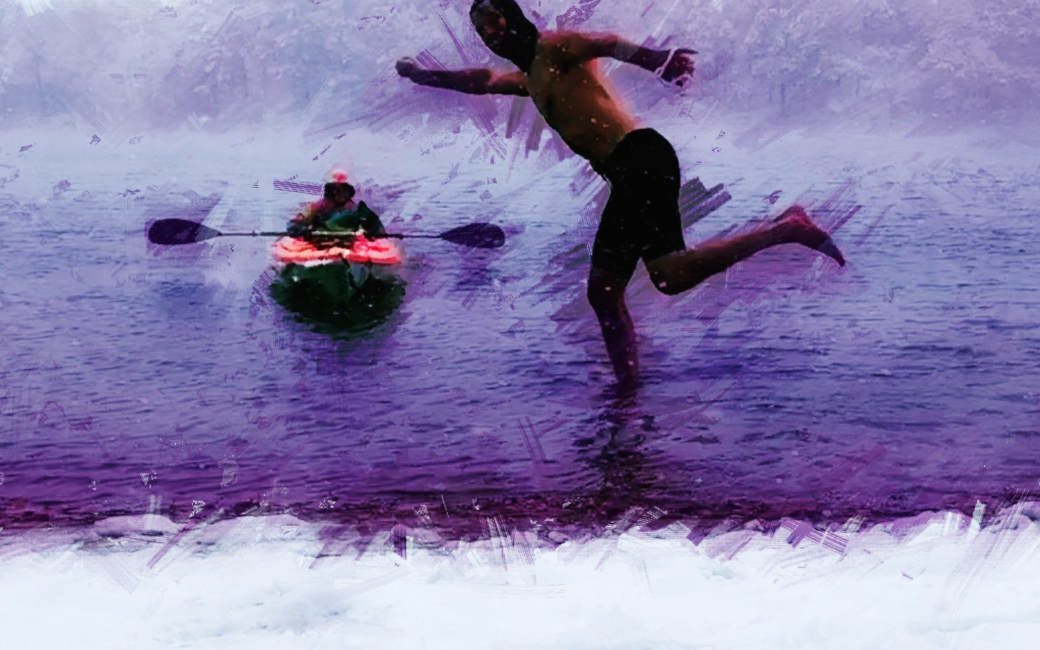
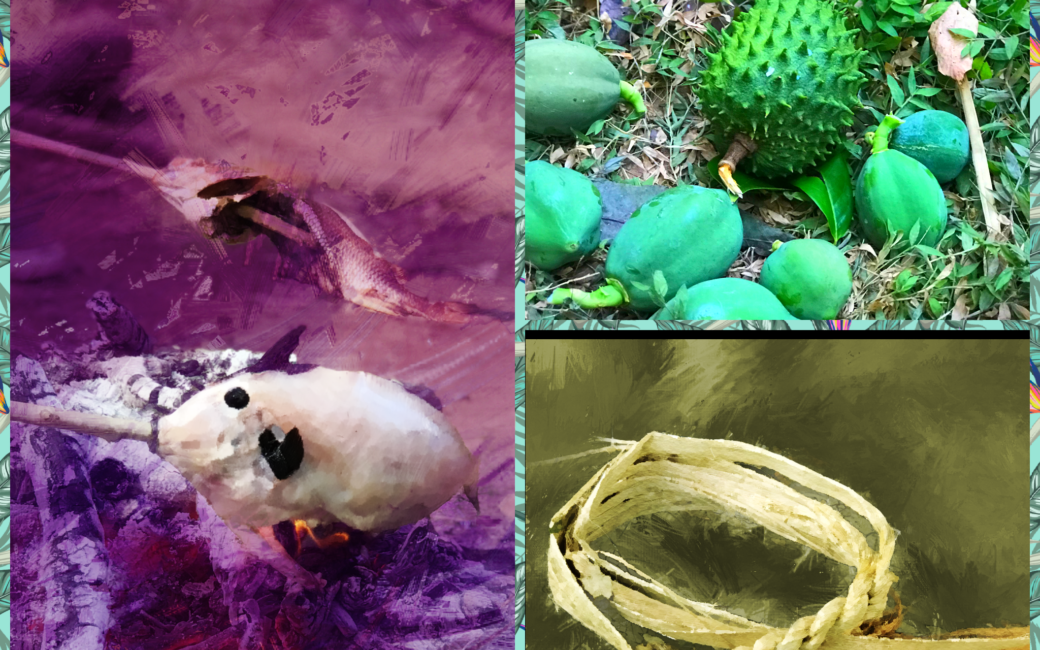
 I once asked the Grandmaster of ninjutsu, Hatsumi Sensei, "When do we learn the survival techniques like building survival shelters, making fire, fishing line and cordage, trapping animals, hunting and other survival skills?"
I once asked the Grandmaster of ninjutsu, Hatsumi Sensei, "When do we learn the survival techniques like building survival shelters, making fire, fishing line and cordage, trapping animals, hunting and other survival skills?"
 calabash bowls for eating. What we didn’t bring was food.
calabash bowls for eating. What we didn’t bring was food.
 There’s much more to this story, which I will share in future posts. I hope this story helps inspire people to go into nature and push yourself occasionally. It’s good to sometimes be uncomfortable in situations that you might not think you could ever endure.
There’s much more to this story, which I will share in future posts. I hope this story helps inspire people to go into nature and push yourself occasionally. It’s good to sometimes be uncomfortable in situations that you might not think you could ever endure.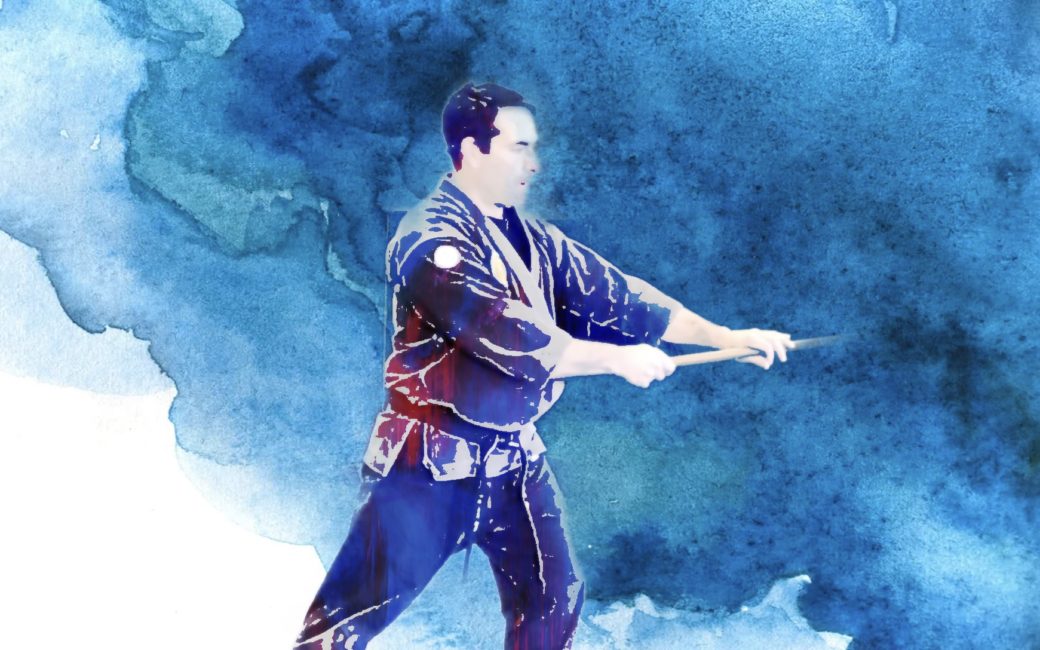
 Hi, this is Mark Roemke with
Hi, this is Mark Roemke with 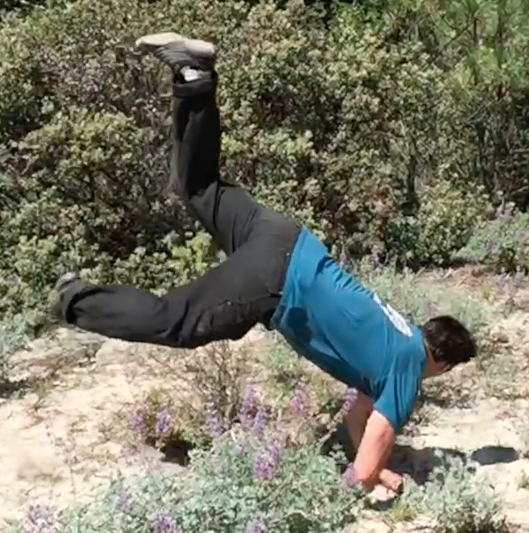
 Today's blog is about a roll called hicho kaiten, the "flying bird" roll. This roll is from Bujinkan Budo Taijutsu, or ninjutsu, the "art of the ninja". This particular roll is an amazing roll. It has saved my life on multiple occasions and has prevented me from getting broken bones or worse. Here is a true story of how hicho kaiten saved my life.
Today's blog is about a roll called hicho kaiten, the "flying bird" roll. This roll is from Bujinkan Budo Taijutsu, or ninjutsu, the "art of the ninja". This particular roll is an amazing roll. It has saved my life on multiple occasions and has prevented me from getting broken bones or worse. Here is a true story of how hicho kaiten saved my life.
 Most practitioners of ninjutsu who are part of the Bujinkan are familiar with the 5th Dan test. Students from around the globe travel to the Bujinkan honbu dojo (home dojo) in Nodashi, Japan to take this test. For this level of progression, a would-be 5th Dan sits with their back to a Dai Shihan or Soke (grandmaster) who is holding a training sword above their head. This test consists of one challenge. To pass, the student must sense the exact moment when the sword is coming down at their head and must instantly roll out of the way.
Most practitioners of ninjutsu who are part of the Bujinkan are familiar with the 5th Dan test. Students from around the globe travel to the Bujinkan honbu dojo (home dojo) in Nodashi, Japan to take this test. For this level of progression, a would-be 5th Dan sits with their back to a Dai Shihan or Soke (grandmaster) who is holding a training sword above their head. This test consists of one challenge. To pass, the student must sense the exact moment when the sword is coming down at their head and must instantly roll out of the way. Fortunately, we found one such teacher. His name is Josh Lane. He is the author of the award winning new book
Fortunately, we found one such teacher. His name is Josh Lane. He is the author of the award winning new book  How do you attain this? The first step is simply to take some time to be in the moment. Let go of your agenda. Let go of the things you were dealing with earlier in your day. Give yourself ten to fifteen minutes to just be present and settle into where you are. Focus on how you are feeling and how the landscape around you feels.
How do you attain this? The first step is simply to take some time to be in the moment. Let go of your agenda. Let go of the things you were dealing with earlier in your day. Give yourself ten to fifteen minutes to just be present and settle into where you are. Focus on how you are feeling and how the landscape around you feels. There's a different feeling around you in the forest when the animals are going about their usual business feeding, foraging, resting, singing, or working on their nests. That's what we call a harmonious feeling or baseline versus when a predator is on the move. When a predator is nearby, the birds become alarmed. This creates an agitated sensation amongst the animals. By becoming present, you open up the possibility to tune into the feeling of a place and to the feeling of what's going on around you. This helps you awaken intuition because we have to be present in the first place to tap into it.
There's a different feeling around you in the forest when the animals are going about their usual business feeding, foraging, resting, singing, or working on their nests. That's what we call a harmonious feeling or baseline versus when a predator is on the move. When a predator is nearby, the birds become alarmed. This creates an agitated sensation amongst the animals. By becoming present, you open up the possibility to tune into the feeling of a place and to the feeling of what's going on around you. This helps you awaken intuition because we have to be present in the first place to tap into it.
 When you have an instinctual experience, you can think of it as the voice of the ancestors communicating through genetic or energetic encoding. This helps us to survive and thrive. Instinct can speak through a "gut feeling" that we're all familiar with. However, it might speak in other ways.
When you have an instinctual experience, you can think of it as the voice of the ancestors communicating through genetic or energetic encoding. This helps us to survive and thrive. Instinct can speak through a "gut feeling" that we're all familiar with. However, it might speak in other ways. Josh: I often suggest that people should begin by walking very slowly. Try slowing down to a third or quarter of your usual speed. Feel each footstep. Be fully in your senses. Notice how you are feeling physically and emotionally. Tend to your physical needs first. This will allow you to be more fully present. Are you feeling open and receptive to nature? How do you feel internally? Once you are present, expand your senses outward. Notice what's going on with the birds and the wind. Notice the scent of the air. Open each of your senses fully. I go deep into this in my book, Conscious Nature. I teach the four stages of meditating outdoors. Each stage is designed to help tap into your intuition. As you get into your senses, start to notice if things arise on the screen of your mind's eye. As your senses notice things, do you get a flash of anything in your mind's eye or a sense of knowing? It could even be a gut feeling that there might be something interesting to check out in a particular direction. Some people call this "body radar." Follow up on your intuition. Explore nature and see what you discover. This is how you build trust and capacity with intuition because intuition is a sense. The more you work with it, the more it comes to life. This is what I teach in my course Exploring Intuition in Nature. It only takes ten to fifteen minutes a day to make a difference and to start developing your intuition.
Josh: I often suggest that people should begin by walking very slowly. Try slowing down to a third or quarter of your usual speed. Feel each footstep. Be fully in your senses. Notice how you are feeling physically and emotionally. Tend to your physical needs first. This will allow you to be more fully present. Are you feeling open and receptive to nature? How do you feel internally? Once you are present, expand your senses outward. Notice what's going on with the birds and the wind. Notice the scent of the air. Open each of your senses fully. I go deep into this in my book, Conscious Nature. I teach the four stages of meditating outdoors. Each stage is designed to help tap into your intuition. As you get into your senses, start to notice if things arise on the screen of your mind's eye. As your senses notice things, do you get a flash of anything in your mind's eye or a sense of knowing? It could even be a gut feeling that there might be something interesting to check out in a particular direction. Some people call this "body radar." Follow up on your intuition. Explore nature and see what you discover. This is how you build trust and capacity with intuition because intuition is a sense. The more you work with it, the more it comes to life. This is what I teach in my course Exploring Intuition in Nature. It only takes ten to fifteen minutes a day to make a difference and to start developing your intuition. Pathways: Anything else you'd like to share with us?
Pathways: Anything else you'd like to share with us?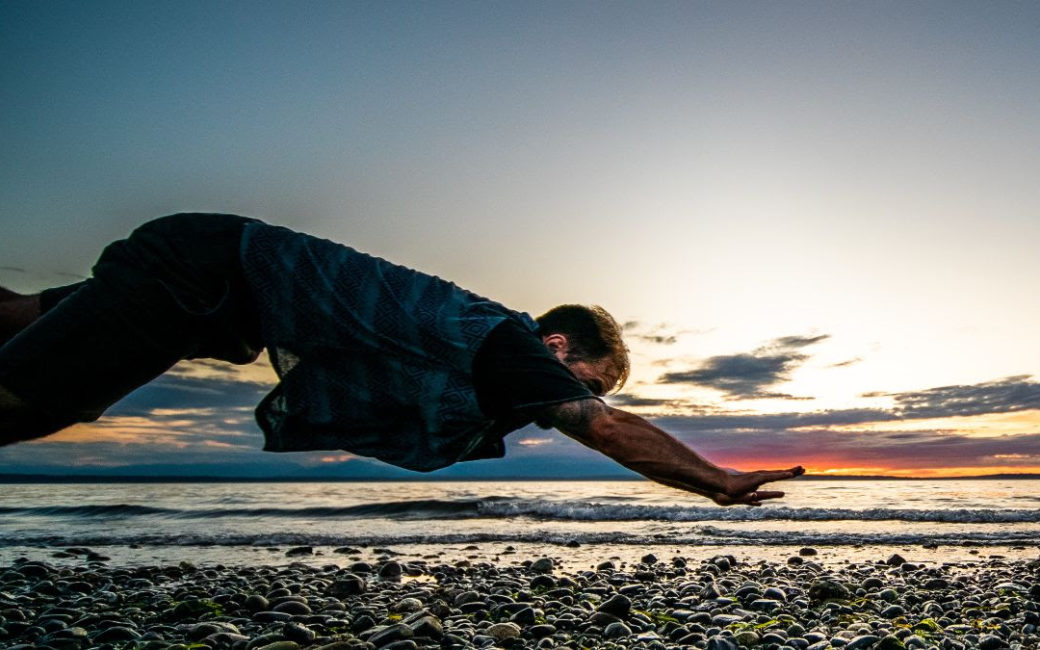
 Kyle: I grew up on the outskirts of Milwaukee Wisconsin. When I was younger I was interested in rough housing and physical arts. Later, after becoming an IT technician I realized that all of my personal skills depended upon equipment. I relied solely on technology to express my skills. My life was changed when I took a survival course where they taught us how to make shelter, fire, and how to move in nature. I remember making my first bow drill fire at that course. At that moment I realized my greater potential. I realized I was capable of so much with so little. Then I studied and eventually became an instructor at Wilderness Awareness School in Washington State. After years of sitting at a desk as an IT professional, my experience in the wilderness taught me that nature allowed me to express myself physically in the way that I wanted to be. I’ve been teaching since then. Now I facilitate transformative experiences in nature centered around movement and play.
Kyle: I grew up on the outskirts of Milwaukee Wisconsin. When I was younger I was interested in rough housing and physical arts. Later, after becoming an IT technician I realized that all of my personal skills depended upon equipment. I relied solely on technology to express my skills. My life was changed when I took a survival course where they taught us how to make shelter, fire, and how to move in nature. I remember making my first bow drill fire at that course. At that moment I realized my greater potential. I realized I was capable of so much with so little. Then I studied and eventually became an instructor at Wilderness Awareness School in Washington State. After years of sitting at a desk as an IT professional, my experience in the wilderness taught me that nature allowed me to express myself physically in the way that I wanted to be. I’ve been teaching since then. Now I facilitate transformative experiences in nature centered around movement and play. Pathways: Why would a practitioner of ninjutsu (or any martial art) benefit from this training?
Pathways: Why would a practitioner of ninjutsu (or any martial art) benefit from this training?
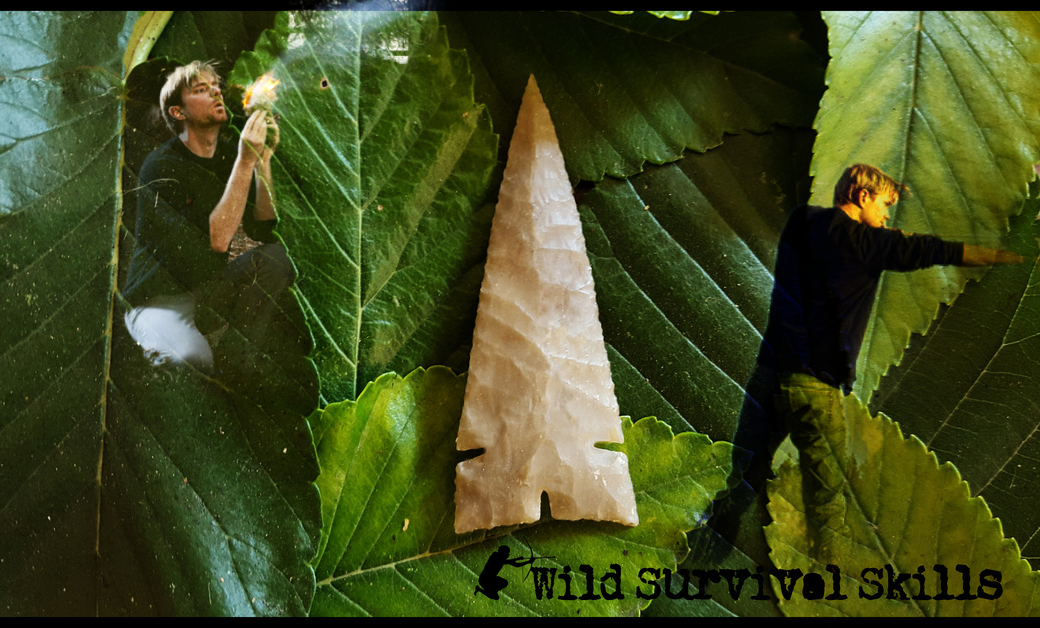
 Over twenty years ago I met a young instructor at the world-renowned Tracker School, run by Tom Brown Jr. He was teaching bow and arrow making, among other skills. I was blown away by his attention to detail and craftsmanship. In a subsequent course, the "scout class," all students, myself included, made "scout pits" which were hidden, subterranean sleeping shelters that we slept in during the week-long course. This young instructor was also teaching at that class, however, I learned that he had taken the subterranean sleeping shelter to another level. At the time, he was living in an underground hogan shelter that he built, complete with a fire chimney that exited secretly through an old hollow stump on the surface.
Over twenty years ago I met a young instructor at the world-renowned Tracker School, run by Tom Brown Jr. He was teaching bow and arrow making, among other skills. I was blown away by his attention to detail and craftsmanship. In a subsequent course, the "scout class," all students, myself included, made "scout pits" which were hidden, subterranean sleeping shelters that we slept in during the week-long course. This young instructor was also teaching at that class, however, I learned that he had taken the subterranean sleeping shelter to another level. At the time, he was living in an underground hogan shelter that he built, complete with a fire chimney that exited secretly through an old hollow stump on the surface. Tom and I actually live in the same town of Santa Cruz, California. I first heard of Tom through local friends. I met him when we did a podcast interview of him at his house several years ago. We discussed how survival skills and ninjutsu go together. Little did I know that I would be going to one of his island survival courses a few years later. More on that adventure in an upcoming post. That first experience with Tom would lead me to some really fun adventures in nature. I'm really excited that we get to work with Tom. He's an amazing survival skills instructor and is very tuned in to the natural world.
Tom and I actually live in the same town of Santa Cruz, California. I first heard of Tom through local friends. I met him when we did a podcast interview of him at his house several years ago. We discussed how survival skills and ninjutsu go together. Little did I know that I would be going to one of his island survival courses a few years later. More on that adventure in an upcoming post. That first experience with Tom would lead me to some really fun adventures in nature. I'm really excited that we get to work with Tom. He's an amazing survival skills instructor and is very tuned in to the natural world.
 Another experience stands out. While staying with a tribe in the Amazon, a hunter named Nanto and I wandered too far into an "undiscovered" tribe's territory in the jungle. They are a very hostile group. Many intruders into their territory have been found dead with a spear in them. One day, we were out blow-gunning birds and came upon Puma tracks on a tree. Nanto mentioned that the shaman had told him that he needed to be wary of Puma as they were a sign that he was in danger. Soon after that, we came across two spears crossed in an 'X' across the trail. Essentially this was our one warning that this one tribe, the Taegeri, were watching and they were telling us that we had gone too far. If we went any further, that would have been the end. Nanto was pretty shaken up when he saw that, which made me literally shake. Luckily we took the warning, turned around, and quickly headed back to his village.
Another experience stands out. While staying with a tribe in the Amazon, a hunter named Nanto and I wandered too far into an "undiscovered" tribe's territory in the jungle. They are a very hostile group. Many intruders into their territory have been found dead with a spear in them. One day, we were out blow-gunning birds and came upon Puma tracks on a tree. Nanto mentioned that the shaman had told him that he needed to be wary of Puma as they were a sign that he was in danger. Soon after that, we came across two spears crossed in an 'X' across the trail. Essentially this was our one warning that this one tribe, the Taegeri, were watching and they were telling us that we had gone too far. If we went any further, that would have been the end. Nanto was pretty shaken up when he saw that, which made me literally shake. Luckily we took the warning, turned around, and quickly headed back to his village. Tom: One of my favorite shelters I have ever lived in was one that was a completely underground hogan. To get into the shelter you would lift a small oak bush to reveal a door, then climb down a ladder into the shelter. One could walk directly over it and not know it was there. I even had a “chimney” going into a hollow tree stump to dissipate the smoke so you wouldn't notice it.
Tom: One of my favorite shelters I have ever lived in was one that was a completely underground hogan. To get into the shelter you would lift a small oak bush to reveal a door, then climb down a ladder into the shelter. One could walk directly over it and not know it was there. I even had a “chimney” going into a hollow tree stump to dissipate the smoke so you wouldn't notice it. Tom: After 25 years since making my first friction fire, I still get a huge kick out of it. When I lived in the woods at age 18 for a year, I wouldn't allow myself to have any fire unless I got it with a hand drill or bow-drill. After consistently getting friction fire for 6 months, one day it just stopped working. I still don’t understand why, but I could not get a friction fire for about 5 days. This was in the middle of December, so you can imagine how difficult it was to not have light or warmth in my shelter, warm food and all the things I was taking for granted. After 5 days, to finally get that back was incredible. I was so grateful then and still feel grateful even today when I get a fire.
Tom: After 25 years since making my first friction fire, I still get a huge kick out of it. When I lived in the woods at age 18 for a year, I wouldn't allow myself to have any fire unless I got it with a hand drill or bow-drill. After consistently getting friction fire for 6 months, one day it just stopped working. I still don’t understand why, but I could not get a friction fire for about 5 days. This was in the middle of December, so you can imagine how difficult it was to not have light or warmth in my shelter, warm food and all the things I was taking for granted. After 5 days, to finally get that back was incredible. I was so grateful then and still feel grateful even today when I get a fire.
 Tom: I try to pour myself into every book of that area to learn about plant life. Then I try to see what indigenous people of that area do/did. I think through all the potential problems I could face and try to play it all out in my head beforehand. Of course there are always surprises, and I only find a few of the hundreds of plants I have studied. But, I do plan for how to provide the basics of Shelter, Water, Fire, Food. After that, I just try to get creative based on what I discover in real-time.
Tom: I try to pour myself into every book of that area to learn about plant life. Then I try to see what indigenous people of that area do/did. I think through all the potential problems I could face and try to play it all out in my head beforehand. Of course there are always surprises, and I only find a few of the hundreds of plants I have studied. But, I do plan for how to provide the basics of Shelter, Water, Fire, Food. After that, I just try to get creative based on what I discover in real-time. Tom: I feel really fortunate to have spent a year living off the land when I was 18. That entire year I spent about $300-$400 in total. What this has gifted me is the ability to know that no matter what happens in my life, I can always go back to that forest and do that again. Because of this, I felt free to take chances on pursuing my passions rather than always playing it safe. I always had an answer to the big “what if things fall apart?” question. I think this gives people confidence to live in less fear, even if they never actually use it. Knowing you can survive off the land gives you a confidence that even the wealthiest person does not have.
Tom: I feel really fortunate to have spent a year living off the land when I was 18. That entire year I spent about $300-$400 in total. What this has gifted me is the ability to know that no matter what happens in my life, I can always go back to that forest and do that again. Because of this, I felt free to take chances on pursuing my passions rather than always playing it safe. I always had an answer to the big “what if things fall apart?” question. I think this gives people confidence to live in less fear, even if they never actually use it. Knowing you can survive off the land gives you a confidence that even the wealthiest person does not have. Tom: In one of my classes, there was a Master Chief from the Navy Seals. He was built like a Greek God and probably one of the scariest people I could ever meet. He had been in the Seals for more than 20 years, and I can't imagine the talents he possessed. During one class on tanning deer hides, my co-instructor had everyone make small leather bags of the buckskin. She taught everyone how to sew various stitches and at some point this Navy Seal called me over asking me how to do a ‘whip-stitch’. I told him that for a guy as tough as he was, I found it funny he was asking me how to sew a tiny little leather pouch to go around his neck. Surely this was beneath him at this point. He then looked at me and commented that being a warrior was about collecting as many skills as possible, and the only way he rose to the top of the Seal program was because he never stopped learning, and finding new things to learn.
Tom: In one of my classes, there was a Master Chief from the Navy Seals. He was built like a Greek God and probably one of the scariest people I could ever meet. He had been in the Seals for more than 20 years, and I can't imagine the talents he possessed. During one class on tanning deer hides, my co-instructor had everyone make small leather bags of the buckskin. She taught everyone how to sew various stitches and at some point this Navy Seal called me over asking me how to do a ‘whip-stitch’. I told him that for a guy as tough as he was, I found it funny he was asking me how to sew a tiny little leather pouch to go around his neck. Surely this was beneath him at this point. He then looked at me and commented that being a warrior was about collecting as many skills as possible, and the only way he rose to the top of the Seal program was because he never stopped learning, and finding new things to learn.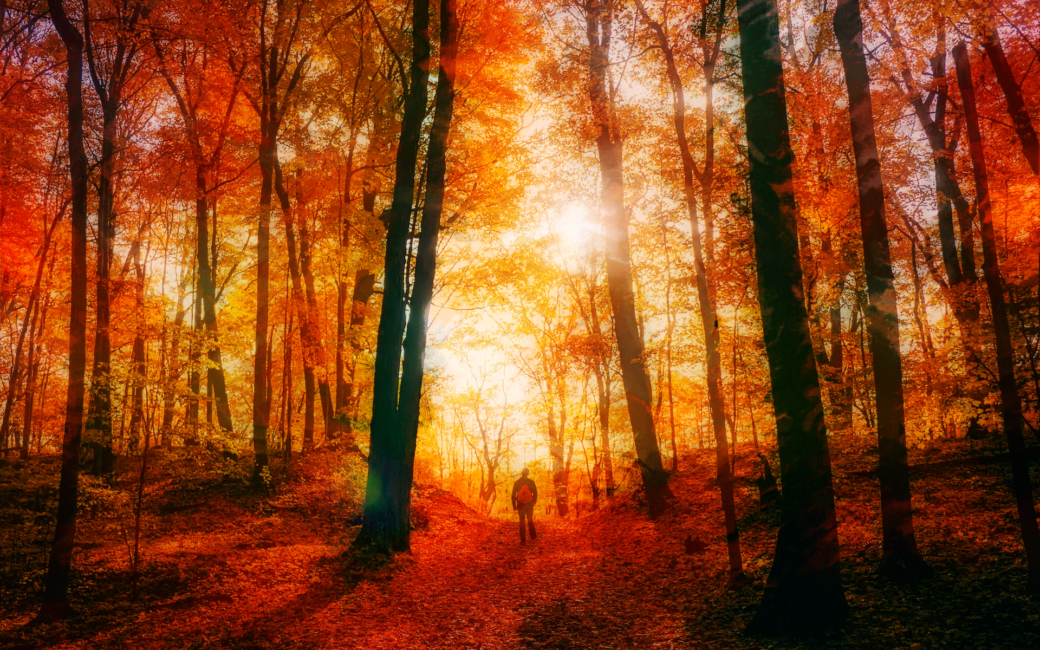



 Before long, a small covey of California quail appeared. Quail are usually very skittish. When they see people they usually run or fly away while making a lot of alarm calls. When these quail came out, one of them flew up to a nearby tree about six feet off the ground. It looked over toward the other bush where the previous little bird was, and then it looked back at us. The quail gave no alarm. The rest of the quail walked by us while continuing to eat. Soon they were right next to us, less than two feet away!
Before long, a small covey of California quail appeared. Quail are usually very skittish. When they see people they usually run or fly away while making a lot of alarm calls. When these quail came out, one of them flew up to a nearby tree about six feet off the ground. It looked over toward the other bush where the previous little bird was, and then it looked back at us. The quail gave no alarm. The rest of the quail walked by us while continuing to eat. Soon they were right next to us, less than two feet away!
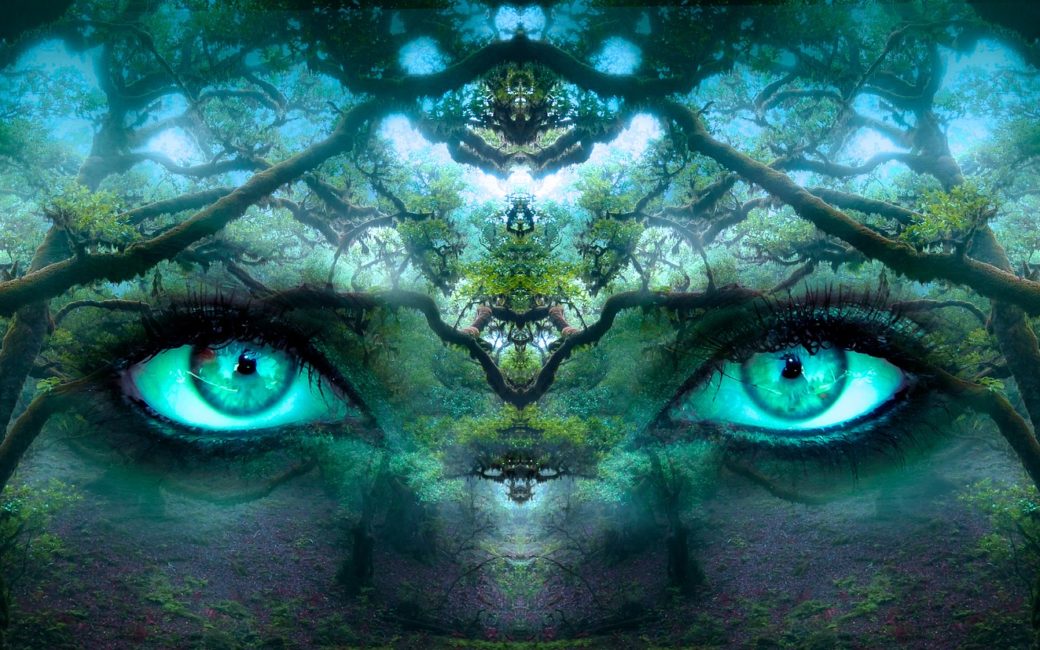
 In today's post, Dai Shihan Mark Roemke shares a technique for locking in the energy of a place of power.
In today's post, Dai Shihan Mark Roemke shares a technique for locking in the energy of a place of power.
 My daughter learned this technique in the NTTV Live class with Sensei Roemke the other day. The next day we were out with our Ninjas in Nature Youth Program making rope ladders and then practicing the art of disappearing into the the trees. My daughter was the first to climb into the tree. She disappeared high into the tree. Several other young ninjas followed up the ladder and scrambled around the lower branches of the tree. I noticed my daughter was being very still.
My daughter learned this technique in the NTTV Live class with Sensei Roemke the other day. The next day we were out with our Ninjas in Nature Youth Program making rope ladders and then practicing the art of disappearing into the the trees. My daughter was the first to climb into the tree. She disappeared high into the tree. Several other young ninjas followed up the ladder and scrambled around the lower branches of the tree. I noticed my daughter was being very still.
 I want to share a short story that just happened to me on my back porch as I was watching the sunrise, drinking my morning mate, and tuning into the language of the birds.
I want to share a short story that just happened to me on my back porch as I was watching the sunrise, drinking my morning mate, and tuning into the language of the birds.


 I noticed too on the ground in the yard below our porch, there were no birds feeding. During baseline, birds are relaxed. Feeding on the ground casually is an example of birds behaving in baseline. Usually our yard would have sparrows, juncos, robins, and cardinals hopping about on the ground searching for breakfast.
I noticed too on the ground in the yard below our porch, there were no birds feeding. During baseline, birds are relaxed. Feeding on the ground casually is an example of birds behaving in baseline. Usually our yard would have sparrows, juncos, robins, and cardinals hopping about on the ground searching for breakfast. But then my yard became quiet again. This time, however, it had a different feel to it.
But then my yard became quiet again. This time, however, it had a different feel to it.